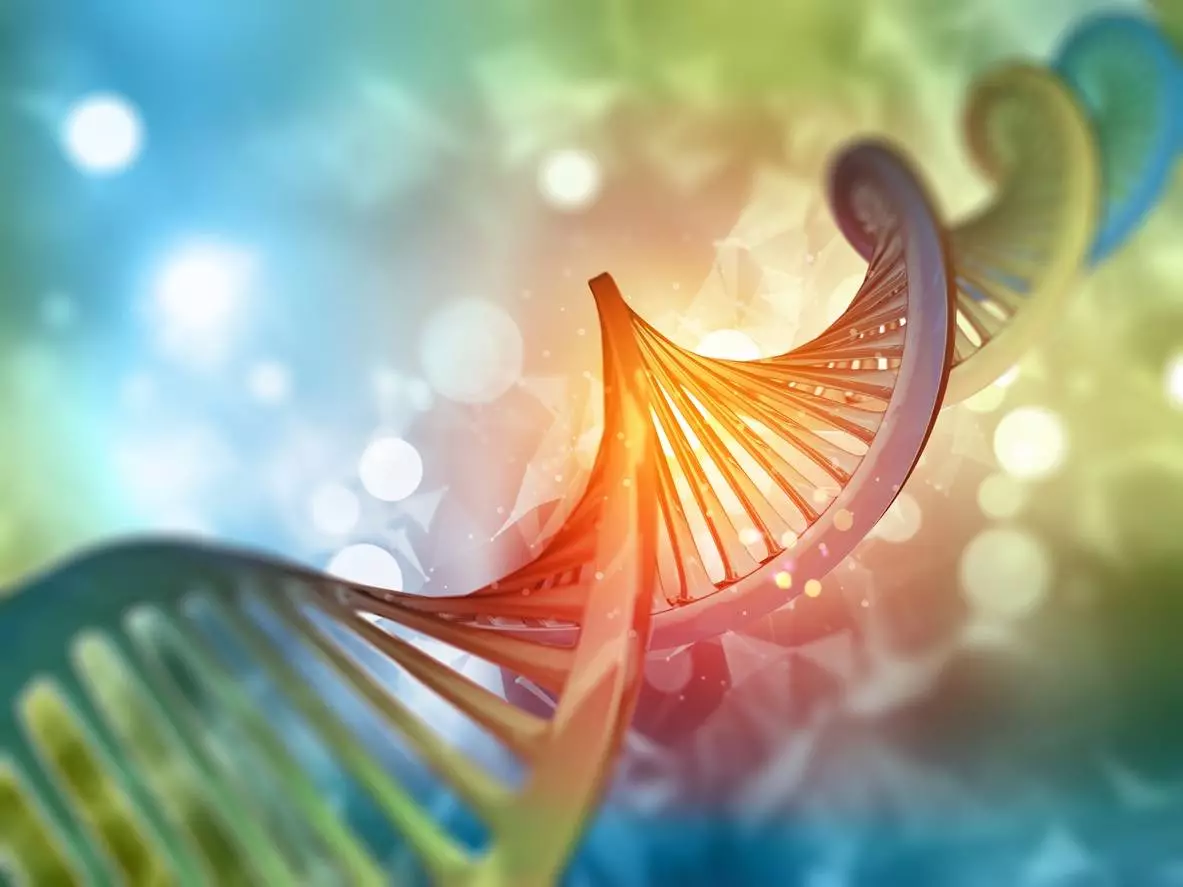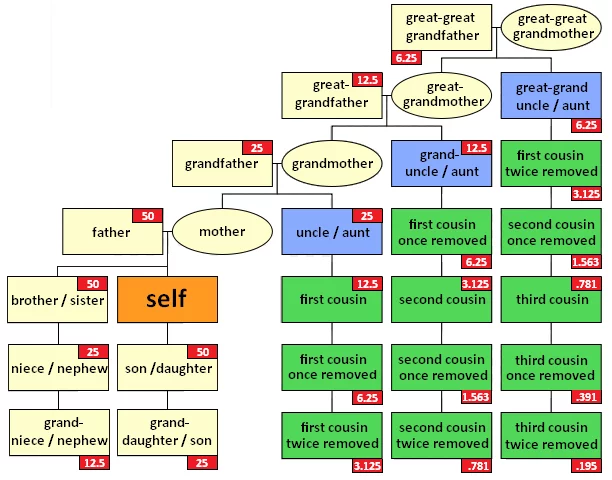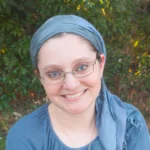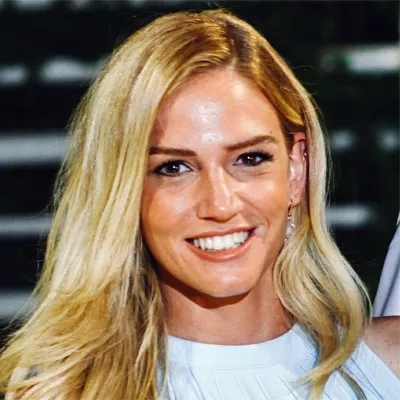
Genetic genealogy can help you break through brick walls in your research. Through DNA matching, you can identify new relatives and infer new information about your common ancestors.
But due to the considerable size of MyHeritage’s database, you may receive thousands of DNA matches. How do you know which ones you should focus on?
The plainest answer to this question is: it depends what you’re looking for.
How much DNA do cousins share?
You share around 50% of your DNA with your parents and children, 25% with your grandparents and grandchildren, and 12.5% with your cousins, uncles, aunts, nephews, and nieces.

A match of 3% or more can be helpful for your genealogical research — but sometimes even less.
How do I know if a DNA Match is a close relative?
Most genealogists are interested in DNA matches that are most closely related to them and with whom they share the greatest number of ancestors.
If you want to focus on DNA matches that are more closely related to you, here’s what to look for:
1. Check the family tree
Any family tree information provided by the DNA Match may be more significant to your research than anything else.
For example, a 0.4% match with someone who has an extensive family tree might be much more helpful than a 3% match with someone who has only 3 people on their family tree.
You’ll be able to find this information right on the match card: See how many shared Smart Matches, ancestral surnames, and ancestral surnames you have.
Your match might even have a Theory of Family Relativity™, which corroborates all the data available through MyHeritage to come up with a plausible theory for how you may be related.
2. Check the percentage of shared DNA
In lieu of solid genealogical information, genetic information can come in handy. The more DNA you share with an individual, the more recent your common ancestor was.
You can find the percentage of DNA you share with a given DNA Match right on the match card.
You will also see that figure expressed in centimorgans. Centimorgans (cM) are units of genetic linkage between two given individuals. For example, if you share 1800 cM with an individual, that means you share around 25% of your DNA with them. A strong match will have around 200 cM or more.
3. Check the length of your shared DNA segments
Determining your relationship with a DNA match is not only a matter of how much DNA you share; it’s also a matter of which segments of DNA you share.
Longer segments of shared DNA indicate that your common ancestor was probably more recent.
Say you have 2 matches who both share 7% of your DNA. One of them shares a few long segments with you, while the other shares many small segments. In this case, the first one is a stronger match.
The second one may share multiple distant ancestors with you, rather than one close ancestor. This happens more frequently in endogamous communities (where people marry within the group), such as the Ashkenazi Jewish population. In populations like these, experts require a higher percentage of shared DNA and longer segments to confirm a strong match, because the shared DNA may not necessarily point to a recent common ancestor.
The number of shared segments and the size of the largest segment (in cM) will be listed on the DNA Match card under “DNA Match quality.” When reviewing the DNA Matches page, you can also sort your matches according to largest segment. This will conveniently place the matches with the largest segment of shared DNA at the top of the list.
How do I find out which ancestor I share with a DNA Match?
Perhaps, rather than trying to find close relatives, you’re trying to trace a particular line of lineage. In this case, you’re trying to identify DNA Matches who share a particular common ancestor.
How do you know which ancestor you and a given DNA match have in common?
That requires some more in-depth sleuthing. MyHeritage has a number of advanced DNA tools that can help.
1. Check for a Theory of Family Relativity™
If you have a Theory of Family Relativity™ for this match, you need not look any further! All you need to do is click “View theory.” This will show you the relationship path between you and your match as identified through Smart Matches™ and Record Matches. Your common ancestor will appear at the top of the chart.
2. Look for shared segments on the Chromosome Browser
The Chromosome Browser tool allows you to view a schematic graph of the DNA segments you share with your DNA Match.
In many cases, you’ll see a Chromosome Browser graph at the bottom of the Review Match page. Right away, you’ll be able to tell whether you share long or short segments of DNA with the match.
If you want to dig deeper, you can use the One-to-Many Chromosome Browser tool in the DNA Tools section. This allows you to compare your DNA to that of multiple DNA Matches — which can help you get a clearer picture of who might be related to whom.
Triangulated segments help you identify your common ancestor
When you compare multiple DNA Matches, you might encounter triangulated segments: segments of DNA that all 3 (or more) of you have in common. If you have a triangulated segment with a known relative and a mystery DNA Match, that means that all of you likely share a common ancestor.
So if what you’re looking for is DNA Matches who are descended from a specific ancestor, it’s very helpful to have known relatives who are descended from that ancestor take a DNA test. That way, you can see on the Chromosome Browser which segments of DNA you share with that person. That may help you infer whether additional DNA Matches who share those same segments are also descended from that ancestor.
If you test enough of that ancestor’s descendants, you may even begin to identify a particular segment of your DNA possibly inherited from that ancestor. If you do, and you find another DNA Match who shares part of that DNA segment with you, you’ll be able to tell right away that they’re descended from that ancestor, too.
Why the Chromosome Browser doesn’t always help
There are limits to the Chromosome Browser method of identifying common ancestors, though. The problem is that because we inherit a random mix of DNA from our parents, the common ancestor might not actually show up in our DNA.
Let’s demonstrate this in terms of ethnicity. Say your grandfather was 50% Italian and 50% Nigerian, and your grandmother was 100% Central Asian. Your dad and uncle each inherited 50% of your grandfather’s genes. However, your dad may have inherited only the Italian genes, while your uncle inherited only the Nigerian genes. That would make your dad 50% Italian and 50% Central Asian, and your uncle 50% Nigerian and 50% Central Asian.
That means that your uncle’s child — your cousin — could have inherited 25% of his Nigerian genes from your grandfather. You, on the other hand, inherited 25% of your Italian genes from your grandfather. Both of you share 25% of your genes with your grandfather, but it’s a different 25%! And you and this cousin will still share 12.5% of your genes — but those shared segments will be the ones inherited from your common grandmother, not your grandfather.
So if you compared your DNA to this cousin’s on the Chromosome Browser, you’d find that the gene segments you’ve identified as having been inherited from your grandfather don’t show up in his genes.
And that is where the AutoClusters DNA tool can help.
3. Find your DNA Match’s cluster on AutoClusters
AutoClusters organizes your DNA Matches by “clusters” that indicate that they may share a common ancestor, based on the DNA they share both with you and with each other.
So let’s say your dad also has a sister. She inherited 25% of your grandfather’s Italian genes and 25% of his Nigerian genes. She also has a child, who inherited 12.5% of your grandfather’s Nigerian genes and 12.5% of his Italian genes. In this case, both of your cousins inherited Nigerian ethnicity from your grandfather, while you didn’t — and the 12.5% of DNA you share with one cousin is different from the 12.5% you share with the other.
But because these cousins match each other, they will be “clustered” together with other descendants of your grandfather — helping you infer that they are, indeed, both descended from your grandfather.
In Summary
Determining whether a DNA Match is a strong match depends on your genetic genealogy goals. Percentage of shared DNA, the length of the shared DNA segments, the location of triangulated segments with other matches, and AutoClusters can all provide you with vital clues that will help move you forward in your genetic genealogy journey.
To determine whether a given DNA Match will help you grow your tree, we recommend taking the following steps:
- Check to see if there’s a Theory of Family Relativity™
- Look at the user’s family tree and review shared Smart Matches™, DNA Matches, and ancestral surnames and places
- Use the Chromosome Browser to examine how much DNA you share and the length and location of shared DNA segments
- Compare the match to known relatives on the One-to-Many Chromosome Browser
- Generate an AutoCluster and locate the cluster that contains the match
- Get as many of your known relatives as possible to take the MyHeritage DNA test — or, if they’ve already tested with another service, upload their data to your tree. Each additional relative’s DNA adds an exponential amount of information you can use to analyze your DNA Matches.




